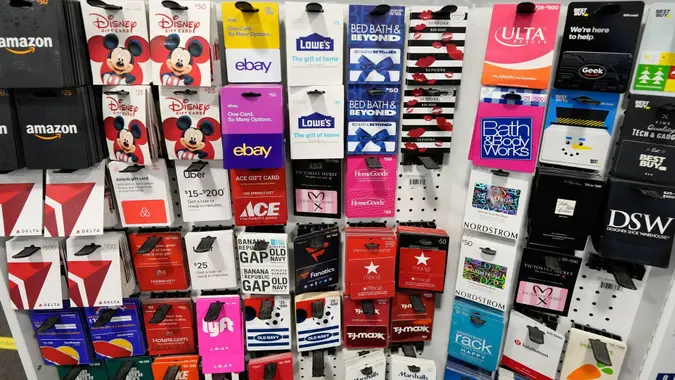When Items Go on Sale: How They Get You To Buy Things You Don’t Need

Commitment to Our Readers
GOBankingRates' editorial team is committed to bringing you unbiased reviews and information. We use data-driven methodologies to evaluate financial products and services - our reviews and ratings are not influenced by advertisers. You can read more about our editorial guidelines and our products and services review methodology.

20 Years
Helping You Live Richer

Reviewed
by Experts

Trusted by
Millions of Readers
Advertisements affect our spending habits and often lead to poor money choices. With society’s social media use and a large portion of our days spent online, it is no surprise that many people are exposed to a constant stream of marketing materials.
“Digital marketing experts estimate that most Americans are exposed to around 4,000 to 10,000 ads each day,” Forbes indicated.
These thousands of advertisements come in the form of social media posts, streaming ads, email newsletters and others.
Because our society is so connected, companies can easily advertise the latest sale, oftentimes directly into our inboxes. How are these advertisers influencing people’s choices, leading to unnecessary purchases?
A Sale Kickstarts Your Shopping Trip
Sales are one way to get people to put items in their cart — and are even a way to get consumers out of the house.
“Just because something’s on sale, doesn’t mean you have to buy it,” finance guru Dave Ramsey indicated in a Facebook post.
For example, if you see an ad for a sale on your favorite reusable water bottle, then you might find yourself at Target or Walmart looking to purchase that item. Suddenly, you’re buying shoes and clothes and yard supplies, all goods you already have at home.
“You have to stop allowing the advertisers to tell you what you need in order to be happy and live a better life,” the Penny Pinchin’ Mom suggested. “If you are easily swayed, then find a way to reduce what you see.”
Reducing what you see could mean unfollowing certain content creators on social media — influencers who are often promoting sponsorships. It could mean unsubscribing to a company’s newsletter. The fewer ads you see, the more likely you are to stay at home instead of heading out to the nearest department store to chase that sale.
The Importance of Assessing Wants vs. Needs
Put simply: There are wants, and then there are needs. Most of the time, the sales that are being advertised are wants, often so-called impulse buys.
When you see a sale item, you are met with a sense of urgency. You may not get a better deal anywhere else, or on a later date. You feel you must buy that item immediately.
This is a sales tactic. A well-advertised sale influences you to purchase that item right away, often in order to soothe the fear of missing out (FOMO).
“When you buy things you did not really need simply because it was on sale or you had a coupon, then you are buying things you may not need,” Penny Pinchin’ Mom outlined.
However, it is recommended to take advantage of a sale for those items that are considered needs.
“That’s not to say it is not wise to stock up on something that is on sale which you may need later (i.e. toilet paper),” Penny Pinchin’ Mom wrote.
More From GOBankingRates
 Written by
Written by  Edited by
Edited by 
























